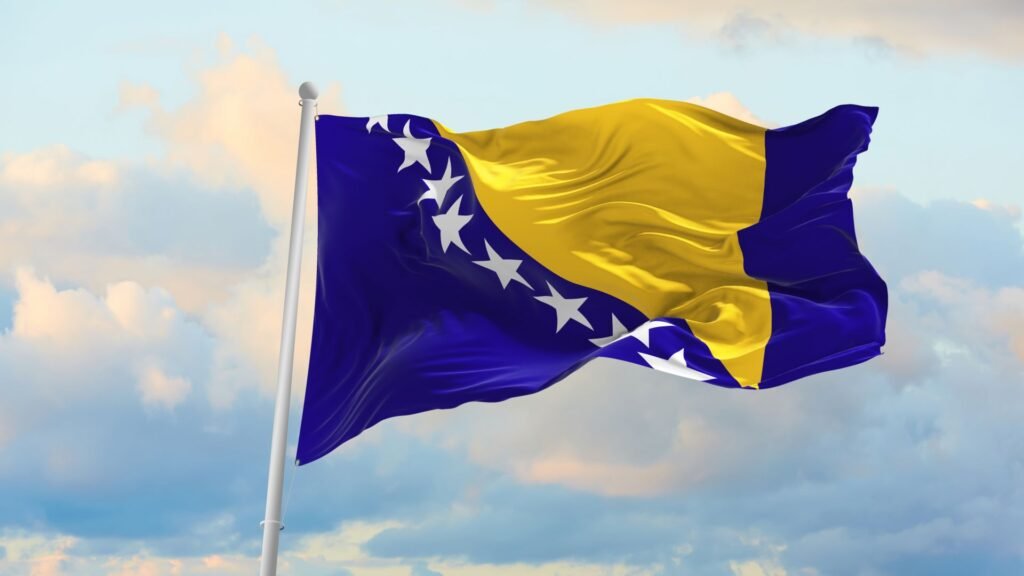“Bosnia and Herzegovina is located in southeastern Europe, bordering Croatia to the north, west, and south, Serbia to the east, and Montenegro to the southeast. Bosnia and Herzegovina also has a narrow access to the Adriatic Sea in the town of Neum.”
Geographical Location and Climate
Bosnia and Herzegovina is located in the central part of the Balkans. The country is divided into two main geographical regions:
- Bosnia: Mountainous region in the north.
- Herzegovina: Region in the south, with slightly warmer climate and drier landscapes.
The climate of Bosnia and Herzegovina is diverse, from continental in the central part of the country to Mediterranean in the south. Winters in the mountains are cold and snowy, attracting winter sports enthusiasts, while summers are warm, perfect for sightseeing and outdoor recreation.
Main Ethnic Groups
In Bosnia and Herzegovina, three main ethnic groups are distinguished:
Bosniaks: They constitute the largest ethnic group. They are predominantly Muslims, and their culture combines Ottoman and Balkan elements.
Serbs: The second-largest group is the Serbs, who are predominantly Orthodox Christians. Serbian culture in Bosnia and Herzegovina is strongly linked to Orthodox and Slavic traditions.
Croats: The third group is the Croats, who are mainly Catholics. Their culture is connected to Western European and Catholic traditions.
Languages

In Bosnia and Herzegovina, three main official languages are used: Bosnian, Serbian, and Croatian. These languages are very similar and mutually intelligible, but the use of a particular language is often associated with ethnic and religious identity.
Religion
Religious diversity is one of the key cultural elements of Bosnia and Herzegovina. The country is home to:
- Muslims (predominantly Bosniaks),
- Orthodox Christians (mainly Serbs),
- Catholics (primarily Croats),
- A Jewish and Protestant minority.
Main Attractions
Sarajevo:
- Baščaršija: The old part of the city with narrow streets, bazaars, and mosques.
- Latin Bridge (Latinska Ćuprija): The site of the assassination of Archduke Franz Ferdinand, which sparked World War I.
- Sacred Heart Cathedral: An impressive Catholic cathedral.
- Tunnel Museum (Tunel spasa): The Tunnel of Life, crucial during the Siege of Sarajevo.
Mostar:
- Stari Most: An iconic stone bridge over the Neretva River.
- Old Town (Stari Grad): Picturesque streets and traditional buildings.
- Koski Mehmed Pasha Mosque: A beautiful mosque with a view of Stari Most.
Blagaj:
- Tekija Blagaj: A Dervish monastery located at the source of the Buna River, with a stunning view of the cliff.
Jajce:
- Pliva Waterfall: An impressive waterfall in the center of the town.
- Jajce Fortress: Ruins of a medieval fortress with beautiful views of the surroundings.
Travnik:
- Old Fortress (Stari Grad): A historical fortress with a view of the town.
- Ivo Andrić’s House: A museum dedicated to the Nobel Prize-winning author.
Počitelj:
- Old Town (Stari Grad): A picturesque settlement with ruins of a medieval fortress and a clock tower.
Neum:
- Beaches: The only access Bosnia and Herzegovina has to the Adriatic Sea, ideal for relaxation and sunbathing.
Nature and Outdoor Activities
Sutjeska National Park:
- Maglić Mountain: The highest peak in Bosnia and Herzegovina.
- Perućica: One of the last remaining primeval forests in Europe.
Pliva Lake:
- Recreation: Ideal for kayaking, fishing, and hiking.
Neretva River:
- Rafting: A popular spot for rafting and kayaking.
Kravica Waterfalls:
Culture and History
- Swimming: Picturesque waterfalls with opportunities for swimming and picnicking.
Srebrenica:
- Memorial Center (Memorijalni centar Potočari): A memorial to the victims of the 1995 massacre.
Višegrad:
- Mehmed Paša Sokolović Bridge: A historic bridge over the Drina River, immortalized in Ivo Andrić’s novel “The Bridge on the Drina.”
Etno Selo Stanišići:
- Ethno Village: A traditional Bosnian village with restored wooden buildings.
